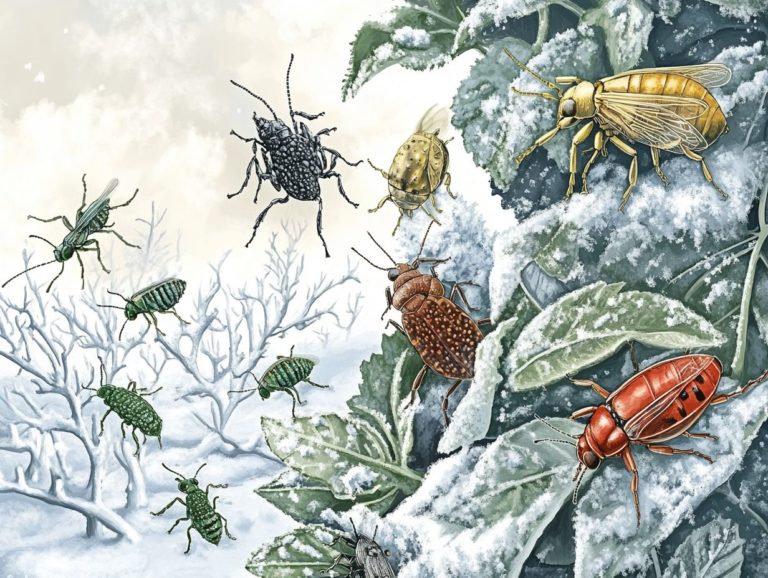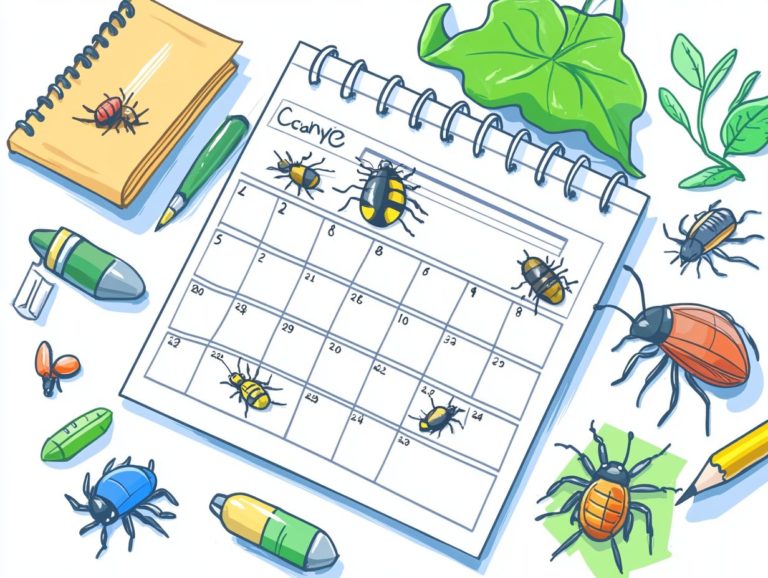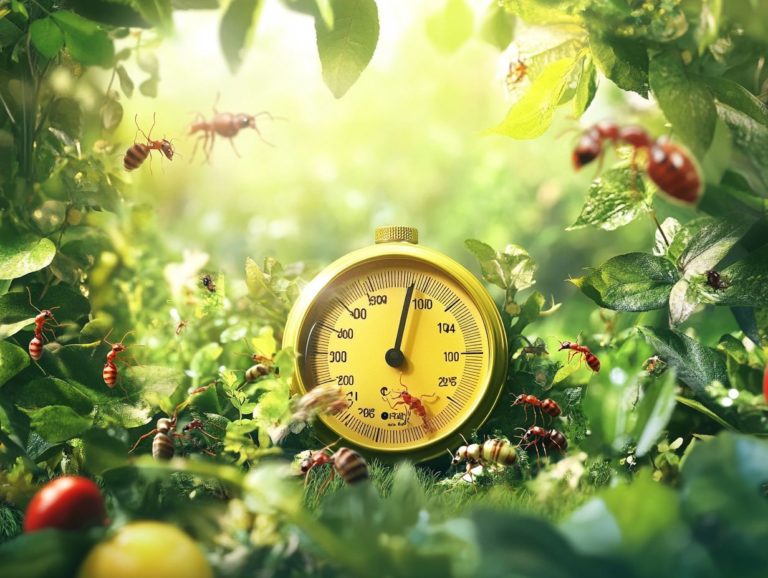Best Practices for Pest Monitoring in Winter
As winter envelops your home, don t let pests catch you off guard! This season can actually be a crucial period for pest control, as many common invaders seek warmth indoors.
It s essential to know which pests are likely to invade and how to keep an eye on them. Understanding the most effective strategies for prevention and treatment is key.
This article delves into the significance of pest monitoring during the colder months, highlights the typical winter pests you may encounter, and offers valuable insights into effective control methods whether you choose traditional approaches or enlist professional help.
Stay informed and take action now to protect your home against winter pests!
Contents
- Key Takeaways:
- The Importance of Pest Monitoring in Winter
- Common Winter Pests
- Methods of Pest Monitoring
- Effective Winter Pest Control Strategies
- Monitoring and Managing Pest Infestations
- Working with a Professional Pest Control Company
- Frequently Asked Questions
- How can I stop pests from coming in this winter?
- Why is pest monitoring important in winter?
- How often should pest monitoring be conducted in winter?
- What types of pests are commonly found in winter?
- Are there any eco-friendly options for pest monitoring in winter?
- What should I do if I find signs of a pest infestation during winter?
Key Takeaways:
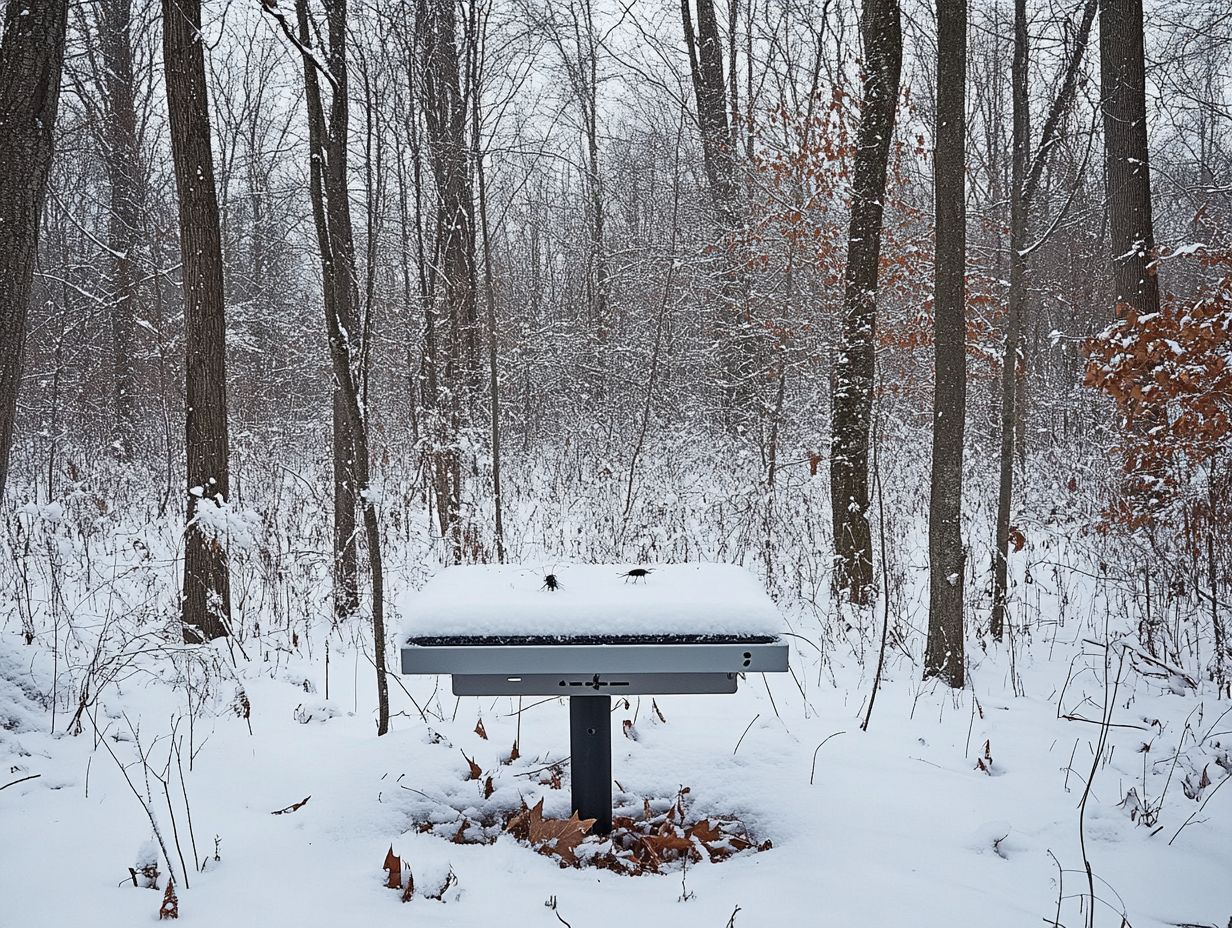
- Winter is a critical time for pest control as pests seek shelter and warmth indoors, making it important to monitor and manage them effectively.
- Identifying and understanding common winter pests is key to implementing effective control strategies and preventing infestations.
- Combining traditional and modern pest monitoring methods, along with preventive measures and treatment options, can effectively control and manage winter pests.
The Importance of Pest Monitoring in Winter
Pest monitoring in the winter months is essential for preserving the health and integrity of your landscape, especially as many pests enter a resting state. Implementing effective pest control in cold climates can further enhance your efforts.
Recognizing the activity levels of pests like spider mites, rodents, and wood borers can greatly influence your pest management strategies. By proactively inspecting and treating your evergreen shrubs and conifers, you can minimize potential damage from infestations.
Effective sanitation practices help keep your home pest-free and maintaining awareness of pest populations will ensure that your property remains pest-free throughout the colder months.
Why Winter is a Critical Time for Pest Control
Winter is a crucial time for pest control, as many pests slip into a dormant state, potentially leading to unchecked populations if left unmonitored. Understanding seasonal pest trends in cold climates can help you strategically leverage this season to implement preventive measures that safeguard the health and safety of your environment.
During these colder months, it s essential to consider the life cycles of various pests. While they may appear inactive, many species can still wreak havoc if not managed appropriately. By adopting effective prevention strategies now, you can significantly diminish the likelihood of future infestations.
Utilizing natural pest control options is key in this effort, providing a safer alternative to harsh chemicals while still addressing your pest concerns. These approaches not only reduce the risks associated with harmful substances but also contribute to a healthier ecosystem overall.
Learn how winter changes pests’ behaviors by understanding pest life cycles in cold weather, turning this season into your prime time for pest control!
Common Winter Pests
In winter, you may find yourself facing a host of common pests that can create challenges for both homeowners and landscape managers. Unwelcome visitors include spider mites, rodents, and the egg masses of leafminers and scale insects.
Early identification of these pests is crucial; it allows you to implement effective pest management and control strategies. By understanding their behavior and life cycles, you can significantly mitigate potential damages and maintain the integrity of your home and landscape.
Identifying and Understanding Common Pests
Identifying common winter pests like spider mites, gypsy moths, and wood borers is crucial for your pest management strategy. By understanding their life cycles, behaviors, and the specific issues they create, you can take the right steps before infestations spiral out of control.
For example, spider mites often manifest as tiny, moving dots on the undersides of leaves. Gypsy moths announce their presence with their distinctive hairy caterpillars or egg masses that resemble fuzzy blobs. Wood borers, in contrast, leave behind noticeable exit holes in wooden structures, signaling serious damage lurking beneath the surface.
These pests can cause serious structural problems. They also threaten the health of your plants. To keep these nuisances in check, regular inspections are vital. The strategic use of sticky traps is essential. By monitoring both indoor and outdoor spaces, you ensure early detection and can implement more manageable interventions.
Methods of Pest Monitoring
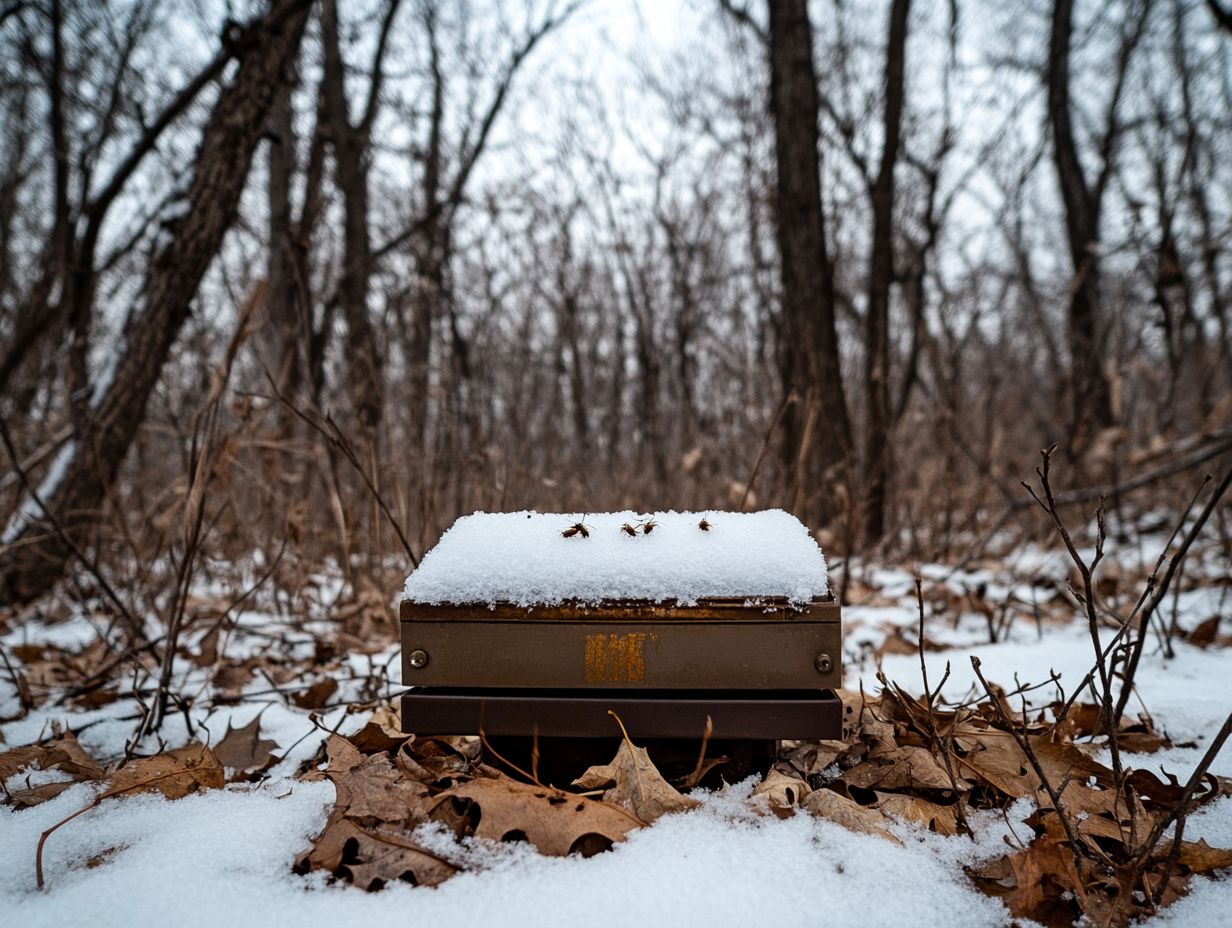
Pest monitoring can be approached through a diverse array of methods. Combine old methods with new tools to effectively assess pest activity and populations in your landscape.
Techniques can vary from straightforward visual inspections of your plants and trees to sophisticated monitoring technologies that deliver real-time data on pest infestations. This ensures you stay ahead of any potential issues.
Traditional vs. Modern Approaches
When comparing traditional and modern approaches to pest monitoring, it’s crucial to understand the effectiveness and techniques tied to each method. Traditional methods often rely on visual inspections and manual traps. Modern techniques harness technology to enhance monitoring capabilities, ultimately improving pest management outcomes.
For example, sticky traps can effectively capture insects, providing immediate physical evidence of a pest problem. However, they might fall short in offering comprehensive data on pest populations and behaviors. Advanced technologies like IoT sensors devices connected to the internet that monitor environments and drones deliver real-time data and can cover expansive areas with remarkable precision. However, their implementation can be pricey and may require a certain level of technical expertise.
By blending these techniques such as using traditional traps alongside smart technology you can create more robust pest management strategies. This approach allows for better data collection and fosters well-considered choices, leading to more sustainable pest control solutions.
Effective Winter Pest Control Strategies
Implementing effective pest control strategies in winter is crucial for preventing infestations and managing pest populations. Utilizing a mix of prevention, treatments, and essential cold-weather pest management tools helps you fight pests effectively while safeguarding the health and safety of your surroundings.
Preventive Measures and Treatment Options
Preventive measures are essential in winter pest control. They provide you with a proactive approach to managing pests before they escalate into a significant issue. When combined with appropriate treatment options, such as organic products, these strategies help maintain the health and safety of your home and landscape.
By taking steps like sealing entry points, keeping your environment clean, and storing food properly, you can greatly reduce the risk of an infestation. Organic pest control options, including diatomaceous earth, neem oil, and essential oils, offer you a safe and effective way to tackle common winter nuisances like rodents and pantry pests.
These alternatives not only minimize the risks associated with chemical residues but also promote a healthier living environment. By focusing on comprehensive preventive strategies and utilizing environmentally friendly treatments, you can ensure that your space remains pest-free during the colder months, all while protecting your family and pets.
Monitoring and Managing Pest Infestations
Effectively monitoring and managing pest infestations requires a blend of preventive measures and timely actions. By using best practices to assess pest activity and apply control measures, you can enhance your success in addressing infestations, especially during the winter months. Consider preventing indoor pests during winter to keep your home pest-free.
Best Practices for Dealing with Winter Pests
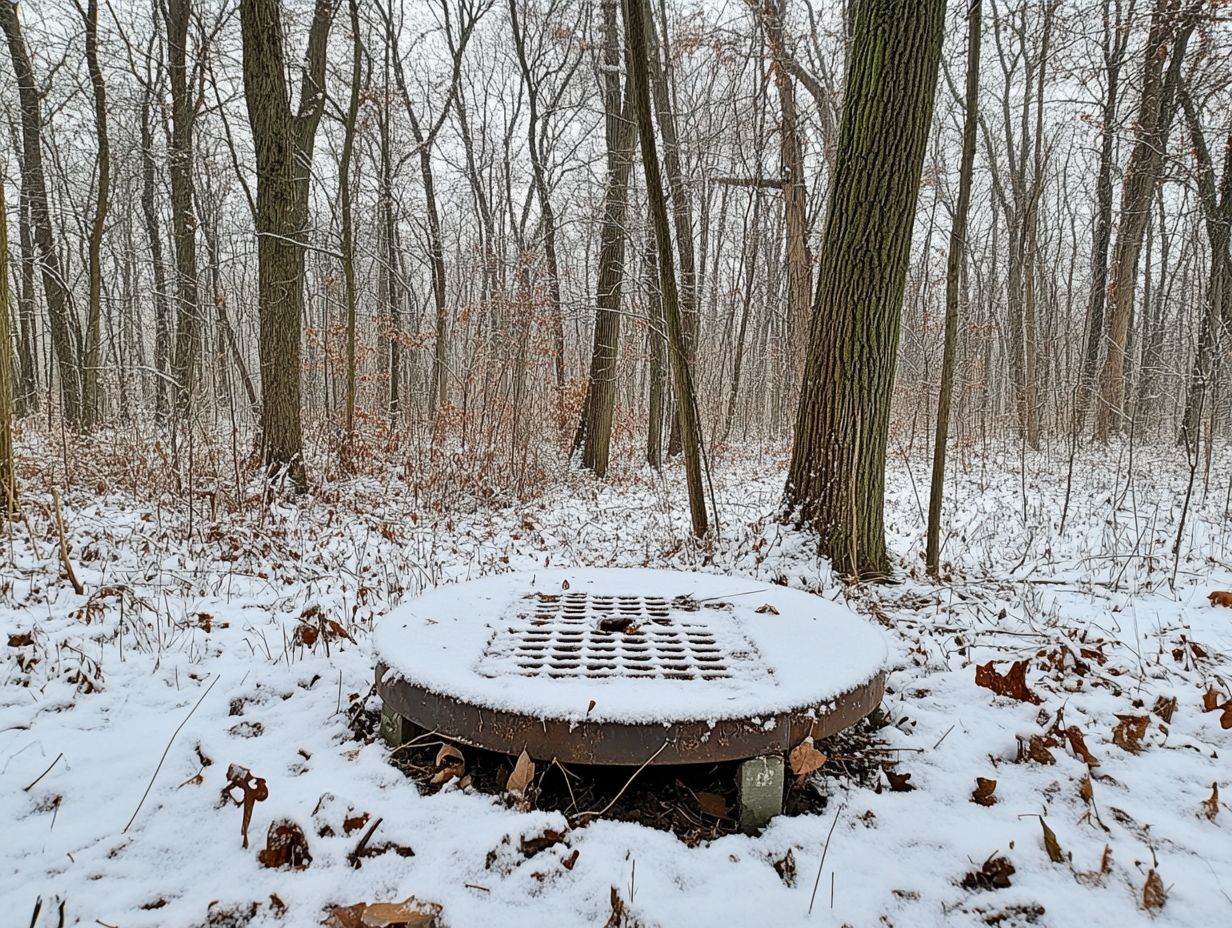
Adopting best practices for handling winter pests elevates your monitoring and management efforts. Techniques like regular inspections, maintaining cleanliness, and understanding the best timing for pest control in winter help mitigate the risks of winter visitors.
It’s essential to seal entry points around your home, ensuring no small openings are left for rodents or insects. Strategically placing pest traps and baits acts as a preventive measure, enabling you to catch infestations early. Stay vigilant about moisture control, as damp areas attract pests seeking shelter.
Regular checks for signs of infestation and consulting with pest control experts provide tailored solutions to manage unwelcome guests during colder months.
Working with a Professional Pest Control Company
Hiring a professional pest control company means access to expert knowledge and effective treatment options specifically tailored to your pest issues.
Understanding key considerations in this partnership enhances the safety and effectiveness of pest management in your environment.
Benefits and Considerations
When you choose a professional pest control service, you re investing in better pest management and increased safety for your home and family. Consider factors like cost, monitoring activity, and service frequency.
With expert pest control solutions, you gain access to advanced techniques and tools that often outperform over-the-counter products. You ensure your living space is treated with a deep understanding of local pest behaviors, including potential infestations from Gypsy Moths. Professionals assess your property s unique needs, allowing for targeted treatments that effectively eradicate pests while minimizing health risks.
While hiring professionals may seem more expensive than the DIY route, the long-term savings from preventing recurring infestations can outweigh initial costs. Consider how often treatments are needed to maintain a pest-free environment, especially in areas prone to moisture that can attract rodents.
Frequently Asked Questions
How can I stop pests from coming in this winter?
Best practices for pest monitoring in winter include inspecting potential entry points, using traps or bait stations, keeping a clean and clutter-free environment, and regularly checking for signs of pest activity. For more detailed strategies, consider the best practices for winter pest control, such as looking for egg masses or signs of infestation.
Why is pest monitoring important in winter?
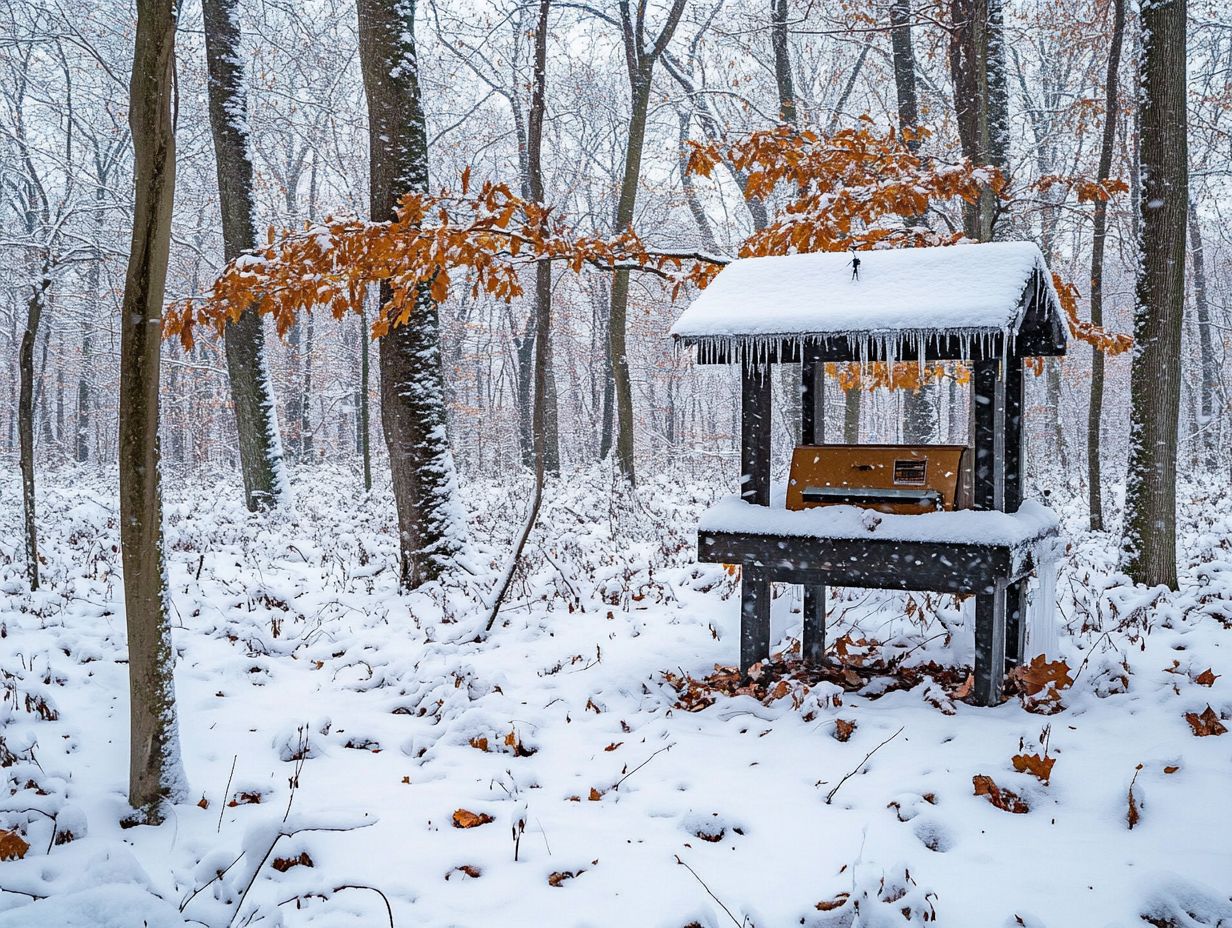
Pest monitoring in winter is crucial because pests seek shelter indoors during colder months. For effective solutions, learn how to use natural pest control in winter to identify and address any potential infestations, including Eastern Tent Caterpillars, before they escalate into larger issues.
How often should pest monitoring be conducted in winter?
Pest monitoring is crucial during winter, especially in areas with a history of pest issues. It’s important to understand pest behavior in cold weather and check these locations at least once a month.
What types of pests are commonly found in winter?
Common winter pests include rodents, cockroaches, spiders, and ants. They seek warmth and shelter in buildings, making homes and businesses prime targets during colder months.
Are there any eco-friendly options for pest monitoring in winter?
Yes! You can use natural repellents like peppermint or citrus oils. Installing physical barriers can also keep pests out, along with other environmentally friendly pest control methods.
What should I do if I find signs of a pest infestation during winter?
If you notice signs of a pest infestation, such as damage to plants or visible activity, act quickly! Contact a professional pest control service to address the issue effectively. Seal entry points and maintain cleanliness to deter future pests.


